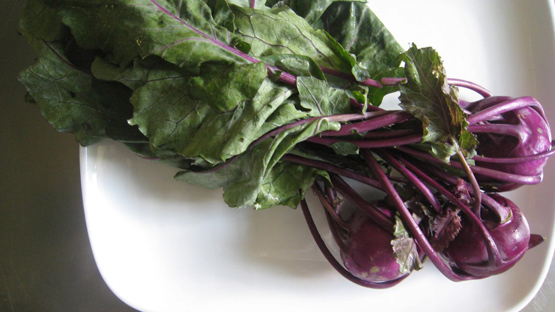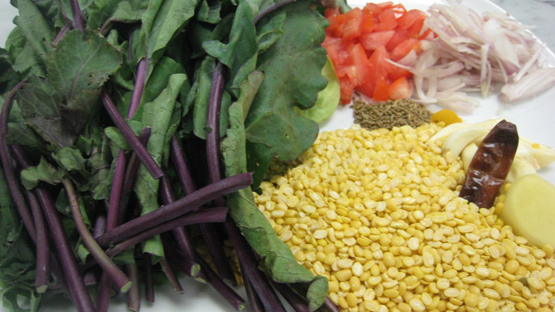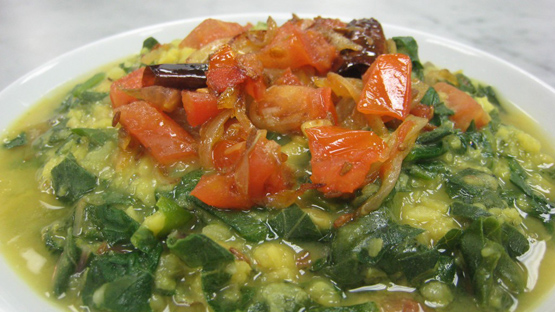 Kohlrabi again was a featured vegetable in my CSA basket from Hilary Chop and Teamwork CSA. Holding it in my hands reminded me of my semester as a student in Vienna and my visits to the famous central Naschmarkt and seeing a knobby light green tennis ball sized vegetable for the first time. It was described to me as a ‘cabbage turnip’. At that point in time I tended to stay away from onomatopoeic foods- in this instance to ‘ turn up’ my nose to this vegetable. I did not think of kohlrabi until a couple of years later while thumbing through Madeleine Kamman’s ‘When French Women Cook’ and decided to make a light creamed kohlrabi dish with dill. Since then it made an annual visit into my Canadian kitchen each July. I would julienne it for salads; make a smooth puree to accompany pork; or simply include it in a seasonal stir fry.
Kohlrabi again was a featured vegetable in my CSA basket from Hilary Chop and Teamwork CSA. Holding it in my hands reminded me of my semester as a student in Vienna and my visits to the famous central Naschmarkt and seeing a knobby light green tennis ball sized vegetable for the first time. It was described to me as a ‘cabbage turnip’. At that point in time I tended to stay away from onomatopoeic foods- in this instance to ‘ turn up’ my nose to this vegetable. I did not think of kohlrabi until a couple of years later while thumbing through Madeleine Kamman’s ‘When French Women Cook’ and decided to make a light creamed kohlrabi dish with dill. Since then it made an annual visit into my Canadian kitchen each July. I would julienne it for salads; make a smooth puree to accompany pork; or simply include it in a seasonal stir fry.
That was until I moved to Delhi where it would greet me in late October. I would discuss different uses of kohlrabi (known as knol knol in Delhi or gaanth ghobi in the southern states) with the vendors from my favourite vegetable stall at INA market. The two recipes in this post make use of the entire plant. A comforting moong dal uses the leaves while the other, a spiced kohlrabi mash, highlights the main bulb.
- 3 cups greens (kohlrabi, spinach, swiss chard, or kale), roughly chopped
- ½ cup moong dal
- 3 cups water
- 3 garlic cloves, finely chopped
- 1 teaspoon fresh ginger, finely chopped
- ⅛ teaspoon turmeric
- Salt, to taste
- For Tempering: Tadka
- 1 tbsp oil
- 1 plum tomato, seeded and diced
- 1 dried red chile, halved
- ½ teaspoon cumin seeds
- 2 shallots, finely sliced
- 1 ½ pounds (6-8 medium sized) kohlrabi, peeled and quartered
- 1 tablespoon vegetable oil
- 3 garlic cloves, finely chopped
- 1 tablespoon ginger, finely chopped
- ½ teaspoon cumin seeds
- 1 medium onion, finely chopped
- 1 green finger chile, deseeded and finely chopped
- ⅛ teaspoon cayenne powder
- ½ teaspoon turmeric
- 2 plum tomatoes, seed and pulp removed, diced
- ½ teaspoon salt
- 2 tablespoons coriander, roughly chopped
NOTE: This was originally posted to my blog India On My Plate on July 9, 2011





